Cleveland Clinic researchers probe possible association

Cleveland Clinic is a non-profit academic medical center. Advertising on our site helps support our mission. We do not endorse non-Cleveland Clinic products or services. Policy
Acute kidney injury (AKI) is a common and troublesome complication following heart transplantation. The etiology tends to be multifactorial in this complex patient population but typically may include acute tubular necrosis and/or hemodynamic insults.
Growing evidence in the general population as well as in recipients of solid organ transplants indicates that even mild, self-limited AKI events after major surgery are associated with poor long term renal and mortality outcomes.
Over time, it has become increasingly common to bridge patients with end-stage heart failure to heart transplant using a left ventricular assist device (LVAD). We hypothesized that data about the renal response to LVAD placement might predict ultimate post-heart transplant renal outcomes. Given the robust LVAD and heart transplant programs at Cleveland Clinic, we sought to investigate our data for such a possible association.
To accomplish this, we retrospectively evaluated patients bridged to heart transplant within one year of LVAD at our institution between 1992 and 2013.
We recorded baseline and post-LVAD creatinine values as long as 42 days after LVAD implant or time to heart transplant, whichever came first.
For each subject we calculated the difference between peak post-LVAD and baseline pre-LVAD creatinine. A heightened difference would imply either progressive decline in glomerular filtration rate (GFR) after LVAD (i.e., lack of beneficial renal response to better perfusion post-LVAD) or perhaps transient or sustained and unrecovered AKI events. Either scenario would be construed as an adverse renal event.
Conversely, a low (or in some cases negative) difference would imply a favorable response to LVAD placement, with at least some improvement in renal function due to better perfusion and absence of AKI events.
Those with peak minus baseline creatinine differences above the median value of the entire cohort were assigned to group A (i.e., “adverse”) and those below the median were assigned to group B (i.e., “favorable”).
We then investigated patients who subsequently received their heart allograft and recorded whether, post-transplant, the patients suffered AKI. This was defined as > stage 1 AKI according to the Acute Kidney Injury Network (AKIN) schema (i.e., >0.3mg/dl and/or a >50% increase in creatinine) within the first 14 days post-transplant. We constructed Cox models to investigate for an independent association between post-LVAD adverse renal outcomes and post-transplant AKI.
We studied 329 LVAD patients bridged to heart transplant. Of these, 159 received their allograft within one year of LVAD and had creatinine data both peri-LVAD and post-transplant. Figure 1 shows the renal response to LVAD placement by level of estimated glomerular filtration rate (eGFR) achieved.
As can be seen in Figure 1, most patients with favorable renal function at the time of LVAD placement maintained that status going into transplant. Similarly, most but not all patients with lower renal function at the time of LVAD placement experienced improved eGFR at the time of transplant, implying a favorable response to presumably better systemic perfusion. Though such information has been shown in prior studies, this type of summation analyses may miss more informative information on a patient level regarding individual response to LVAD.
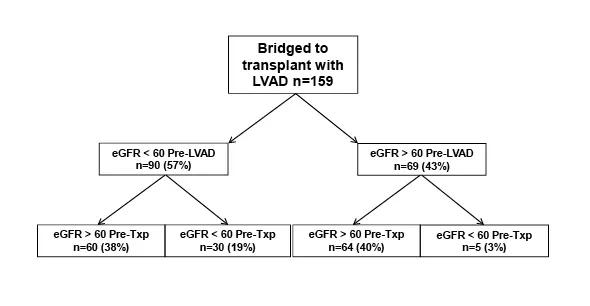
Figure 1. Renal function (estimated glomerular filtration rate) prior to LVAD placement and prior to heart transplant.
As such, we chose to look at the renal response on a more granular level.
Figure 2 demonstrates a histogram showing the patient-specific responses to LVAD placement. Median (10th, 90th percentile) difference between peak creatinine after LVAD and pre-LVAD creatinine was 0.35 (-0.3, 1.7) mg/dl, with 50% (n=80) in the “adverse” group and 50% (n=79) in the “favorable” group. Table 1 shows the baseline pre-LVAD and pre-transplant demographic and clinical information, stratified by “adverse” vs. “favorable” groups. It is important to note that the mean creatinine and eGFR pre-transplant were identical in the two groups. Median (10th, 90th percentile) time between LVAD and heart transplant was 94 (26, 269) days.
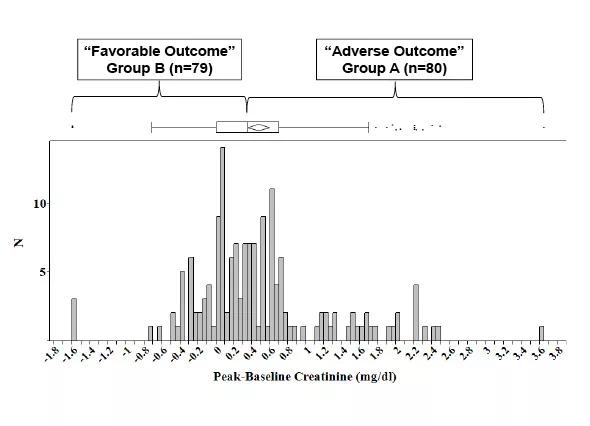
Figure 2. Patient-specific responses (peak creatinine) to LVAD placement.
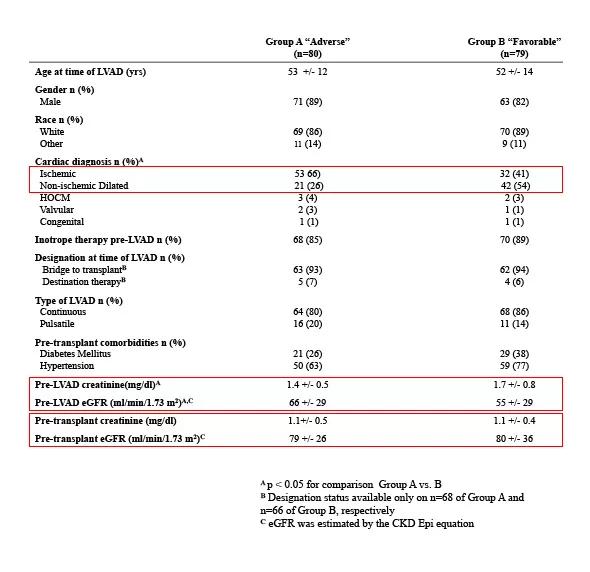
Table 1. Baseline pre-LVAD and pre-heart transplant demographic and clinical information, stratified by “adverse” vs. “favorable” groups.
Figure 3 demonstrates the incidence of AKI after heart transplant by various AKI definitions, including > AKIN stage 1 AKI. Regardless of the AKI definition utilized, those who had an adverse renal response to LVAD placement experienced a higher incidence of AKI. Table 2 shows the univariate and multivariate predictors of AKI after heart transplant. Controlling for age, demographic data and pre-transplant kidney function, in addition to older age (OR 1.5 per decade, 95% CI 1.1, 2.1, p=0.02) and male gender (OR 3.1, 95% CI 1.1, 8.7, p=0.03), an adverse vs. favorable renal response to LVAD independently predicted AKI after eventual heart transplant (OR 2.5, 95% CI 1.2, 5.4, p=0.01).
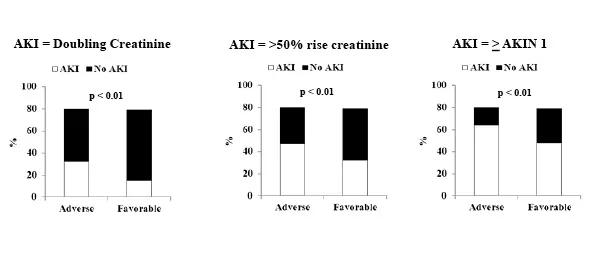
Figure 3. Incidence of acute kidney injury after heart transplant by various definitions.

Table 2. Univariate and multivariate predictors of acute kidney injury after heart transplant.
These findings imply that, to predict which patients are at risk for AKI, a static measure of renal function at the time of transplant is less informative than the renal response after LVAD placement.
One could view this renal response to LVAD as a measure of renal reserve at the time of LVAD placement — a sort of “renal stress test.” That is, if after LVAD placement a patient has a favorable response to better renal perfusion, this implies better kidney health that may have been masked by the failing heart syndrome, as well as avoidance of early post-LVAD AKI events which themselves may be deleterious.
We hypothesize that more renal reserve at the time of heart transplant would make patients less likely to have immediate or potentially long-term adverse post-transplant renal outcomes. We believe that utilizing informative, patient-specific information such as individual renal response to LVAD placement will better help to risk- stratify and improve the transplant care of these patients.
Dr. Stephany is a staff member of Cleveland Clinic’s Department of Nephrology and Hypertension and of the Transplant Center, and an Assistant Professor of Medicine at Cleveland Clinic Lerner College of Medicine. He can be reached at stephab@ccf.org or 216.444.5382.
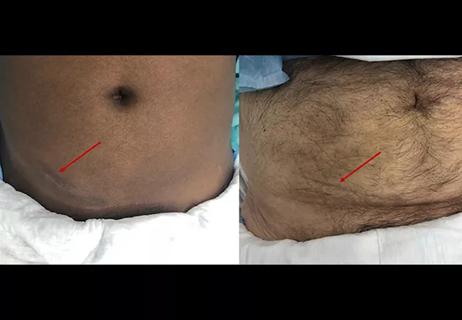
Smaller incision may lead to reduced postoperative pain for some patients
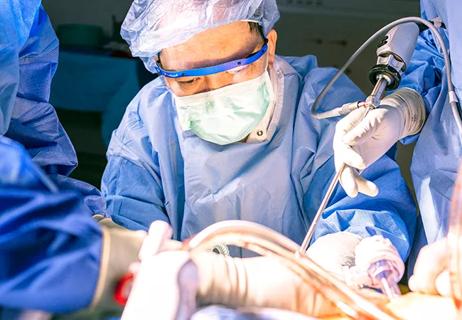
Improving access to lifesaving kidney transplant

The process could improve access and equity for patients with end-stage kidney disease

Video offers glimpse into technically challenging portion of the procedure
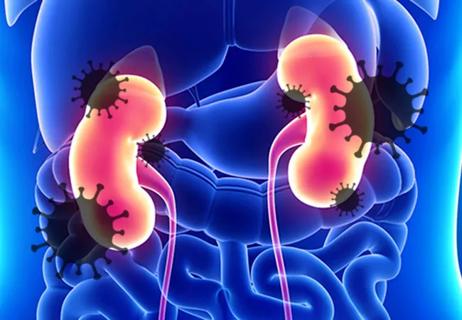
Infectious disease and kidney transplant specialists share key insights
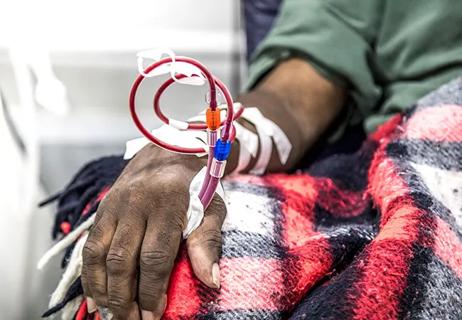
Demographic and social factors found to influence preemptive listing

New interventions and policies haven’t increased wait-listing

Cleveland Clinic surgeons use single-incision robotic surgery to perform kidney transplant